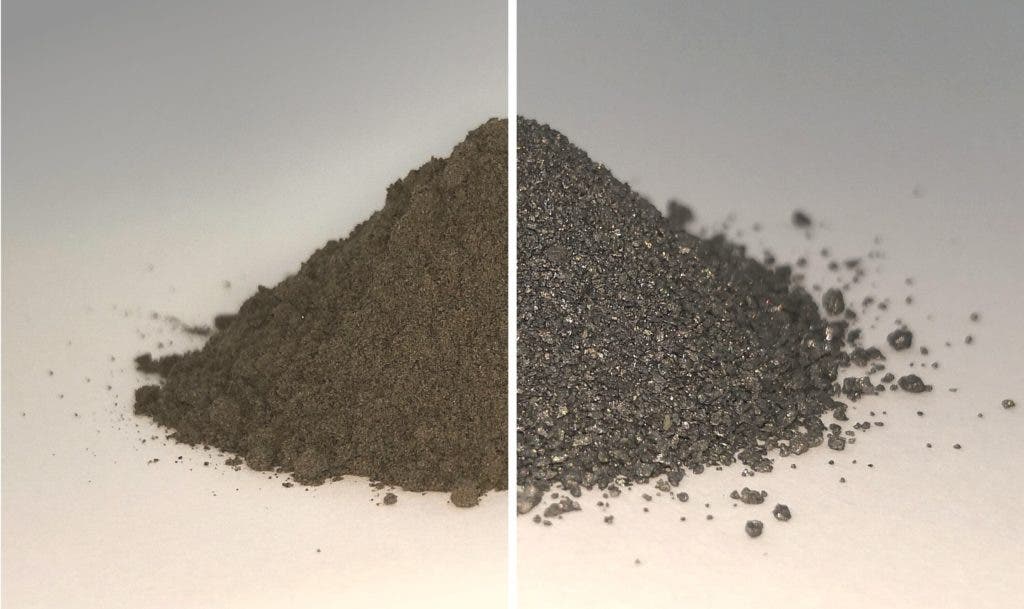New research from the University of Glasgow is working out how to squeeze metal and oxygen from dry rock; dry moon rocks that is.

Samples of regolith (dirt) retrieved from the Moon revealed that the material is made up of between 40% to 45% oxygen by weight. Essentially, this vital (for us) gas is the single most abundant element in the lunar soil. A group of researchers plans to draw the oxygen out of the dirt, in order to give astronauts and colonists a reliable and plentiful source of breathable air and metals.
Rise from the dirt
“This oxygen is an extremely valuable resource, but it is chemically bound in the material as oxides in the form of minerals or glass, and is therefore unavailable for immediate use,” explains researcher Beth Lomax of the University of Glasgow, whose Ph.D. work is being supported through the European Space Agency’s (ESA) Networking and Partnering Initiative.
The approach involves the use of molten salt electrolysis to pry apart the Oxygen and metallic atoms in regolith. The team reports that this is the first “direct powder-to-powder processing of solid lunar regolith simulant” that can extract all the oxygen in such a sample. Alternative methods, they add, either achieve much lower yields or require extreme temperatures (in excess of 1600°C) to work.
The team placed powdered regolith in a mesh-lined basket, mixing in molten calcium chloride salt as an electrolyte. Then they baked everything up to 950°C. While the regolith is still solid at this temperature, the team explains that pushing current through it causes the oxygen atoms to migrate across the molten salt and build-up at the anode.
The technique takes around 50 hours to pull 96% of the oxygen from a sample, but around 75% of the total is extracted in the first 15 hours.
“This research provides a proof-of-concept that we can extract and utilise all the oxygen from lunar regolith, leaving a potentially useful metallic by-product,” adds Lomax.
“This work is based on the FCC process — from the initials of its Cambridge-based inventors — which has been scaled up by a UK company called Metalysis for commercial metal and alloy production.”
Going forward, the team plans to continue cooperating with Metalysis and ESA to ready the process for a lunar context. The process would give lunar settlers access to oxygen for fuel and life support, and raw material (metals) for on-site manufacturing. Exactly what metals they would obtain, the team says, would depend on where on the Moon they land.
Furthermore, the same approach could likely work on Mars as well, materials engineer Advenit Makaya told Phys. The findings also tie in nicely with previous research that developed an approach to extract water out of lunar regolith. Future colonists, it seems, will have ample resources at their disposal.
The paper “Proving the viability of an electrochemical process for the simultaneous extraction of oxygen and production of metal alloys from lunar regolith” has been published in the journal Planetary and Space Science.









